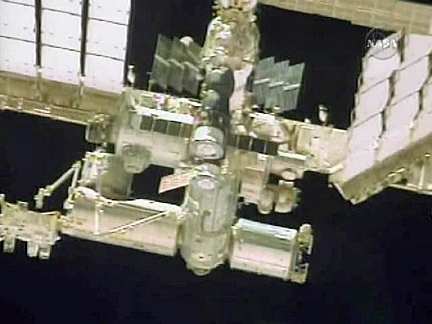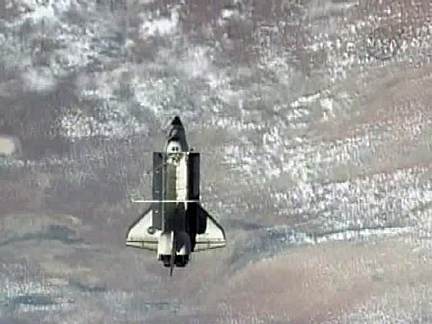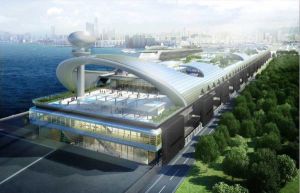The space shuttle Endeavour undocked from the International Space Station Friday, leaving behind a new habitation module and observation deck that virtually complete the U.S. segment of the lab complex after more than 11 years of construction.
With pilot Terry Virts at the controls, Endeavour pulled directly away from the station’s forward docking port at 7:54 p.m. EST after nine days of joint activity.
“Zambo, it’s been good having you, sorry to see you guys leave,” station flight engineer Timothy Creamer radioed to shuttle commander George Zamka. “We’ll watch and wave.”
“T.J. from Endeavour, thanks very much for the great hospitality,” Zamka replied. “We’re sorry to go. Hope you get to enjoy Tranquility and the new view.”
Station commander Jeffrey Williams, following naval tradition, formally announced the separation, saying “United States space shuttle Endeavour, departing,” before ringing the ship’s bell in the forward Harmony module.
At a distance of about 400 feet directly in front of the station, Virts initiated a 360-degree photo-documentation fly-around, looping up above the complex, directly behind, and then below before firing a rocket to leave the area for good.
“You guys are looking absolutely marvelous down there against the backdrop of the ocean and the clouds,” Williams called. “Terry, it looks like you’re doing some smooth flying.”
“Terry is making this an absolute pleasure trip around the International Space Station,” Zamka said. “You guys look great as well. We had you back-lit tremendously by the Himalayas and it is just a sight to behold. Looking forward to you guys seeing it when we get on the ground.”
Zamka, Virts, Kathryn Hire, flight engineer Stephen Robinson, and spacewalkers Robert Behnken and Nicholas Patrick plan to spend the rest of their “day” packing and inspecting the shuttle’s reinforced carbon nose cap and wing leading edge panels, which experience the most extreme heating during re-entry.
Using a laser scanner and camera on the end of a 50-foot extension to the shuttle’s robot arm, the astronauts planned to look for signs of any micrometeoroid impact damage that might have occurred since an identical inspection the day after launch.
“After undocking we have to perform another inspection like the one we did on flight day two, this time to check for damage that might have happened on orbit,” Patrick said in a NASA interview. “And then we’ll spend an entire day turning our orbiter back into a winged vehicle that can re-enter the Earth’s atmosphere.
“So we’ll get out all our suits and hang them up, ready to go the next morning for entry,” he said. “We will set up all the seats and the communications lines and the oxygen lines and so on and we’ll start putting away everything we’ve used during the mission.”
Landing back at the Kennedy Space Center is scheduled for 10:16 p.m. Sunday, but nearby showers could cause problems. The forecast also calls for rain near the shuttle’s backup landing site at Edwards Air Force Base, Calif.
Source: By William Harwood from CBSNews.com
Image: NASA TV





![Read more about the article [Video] Watch The First Ever Vertical Take-off And Landing Of F-35B Fighter Jet](https://thetechjournal.com/wp-content/uploads/2013/05/F-35B-512x379.jpg)